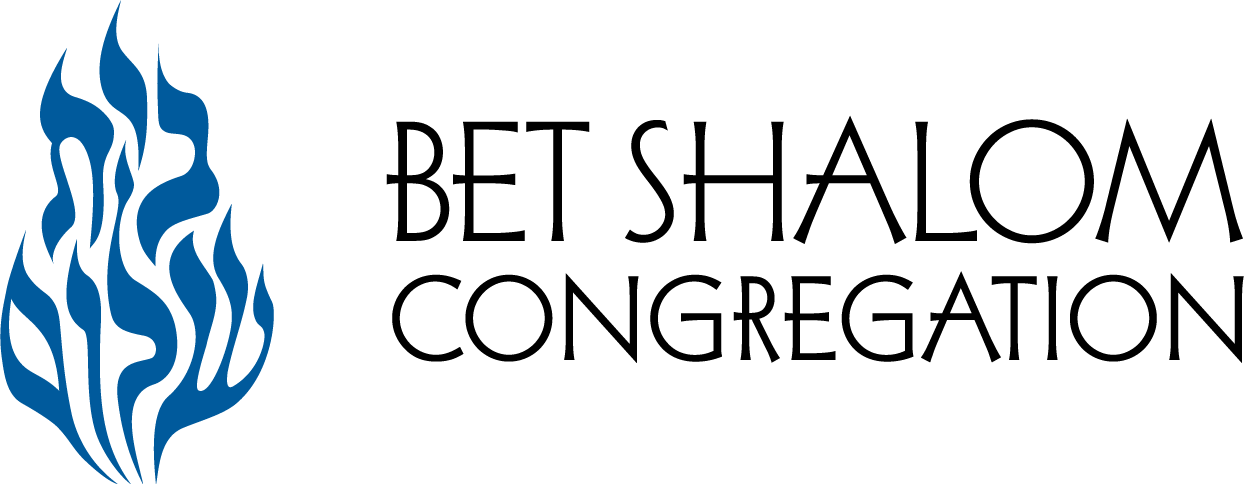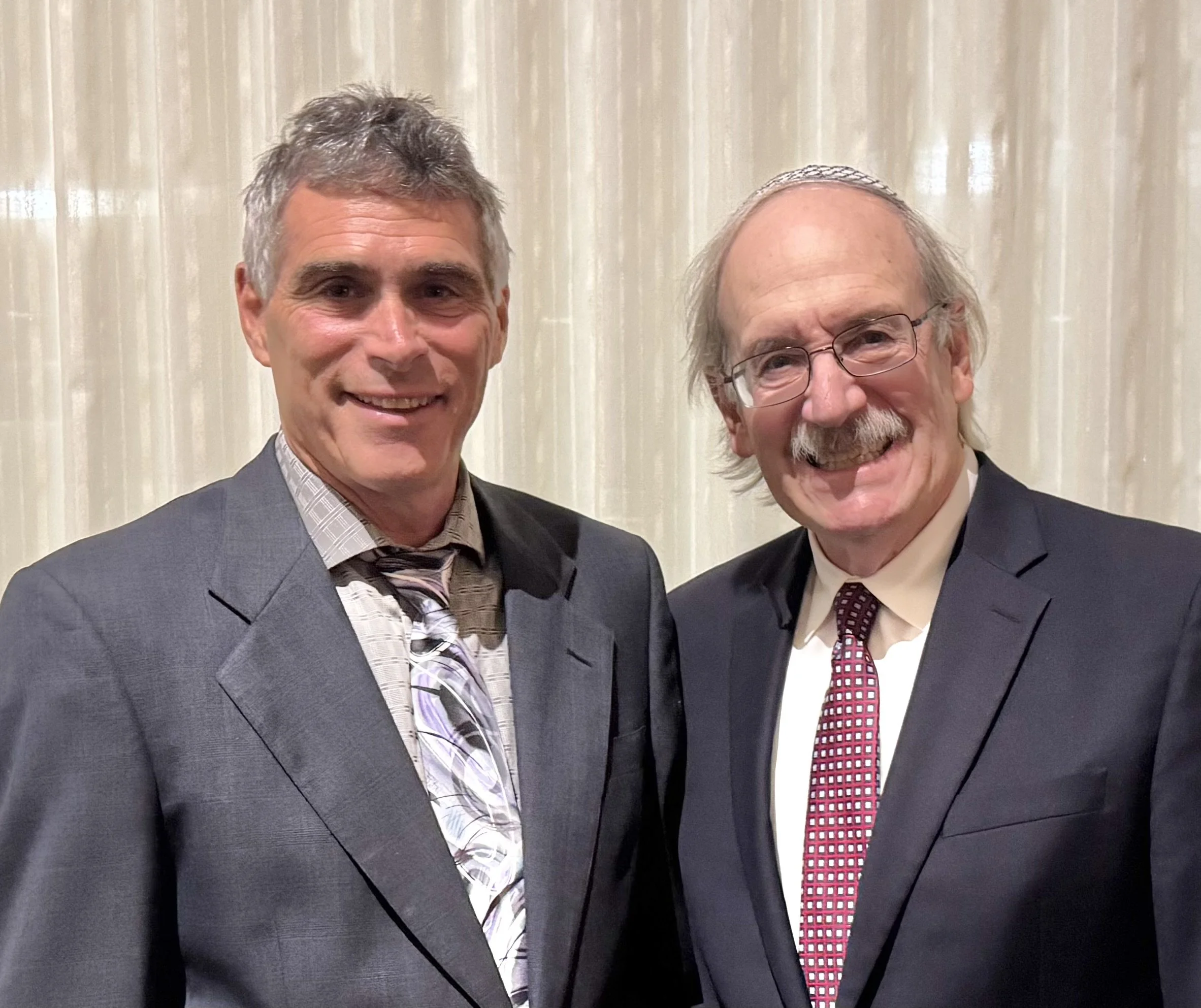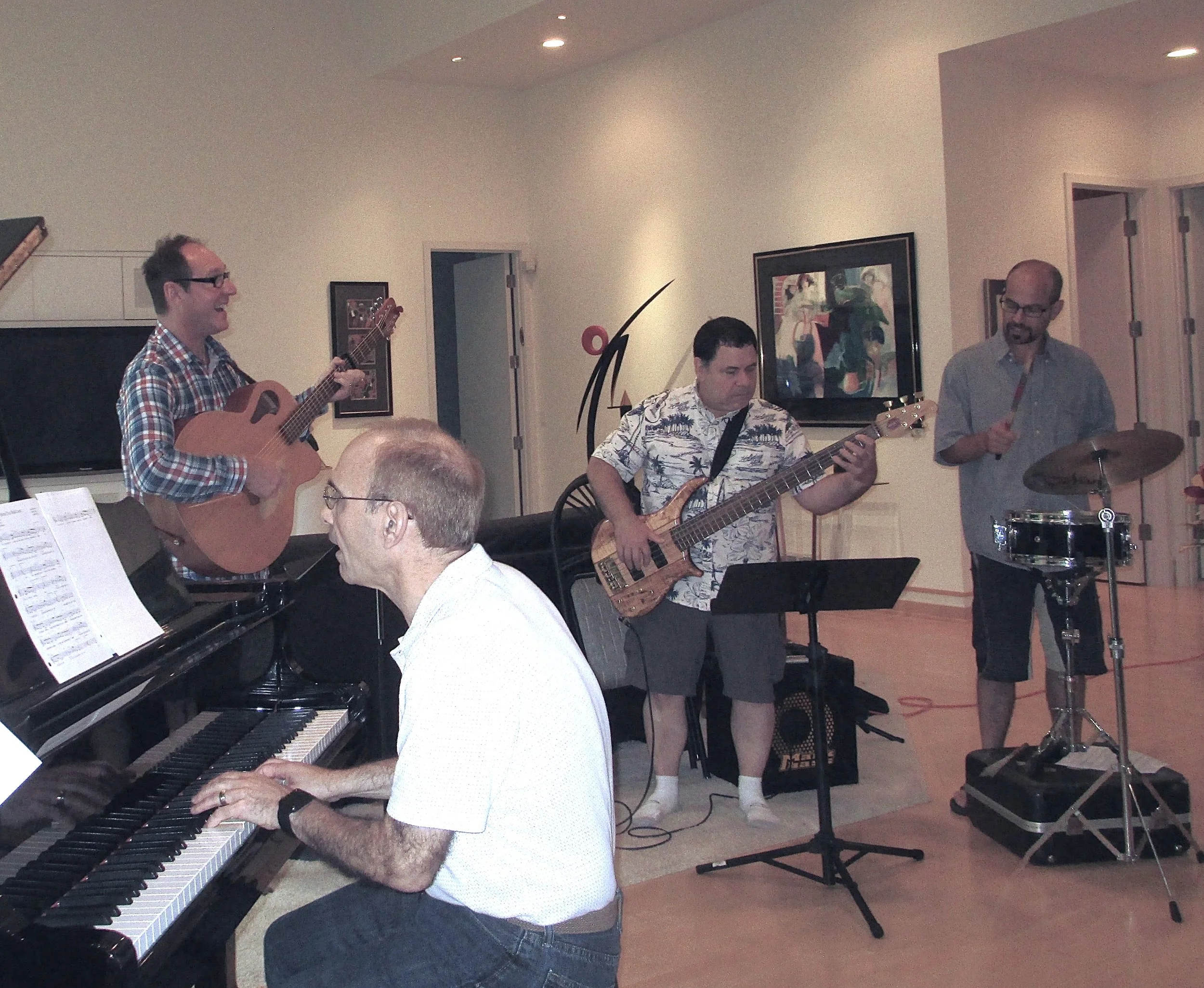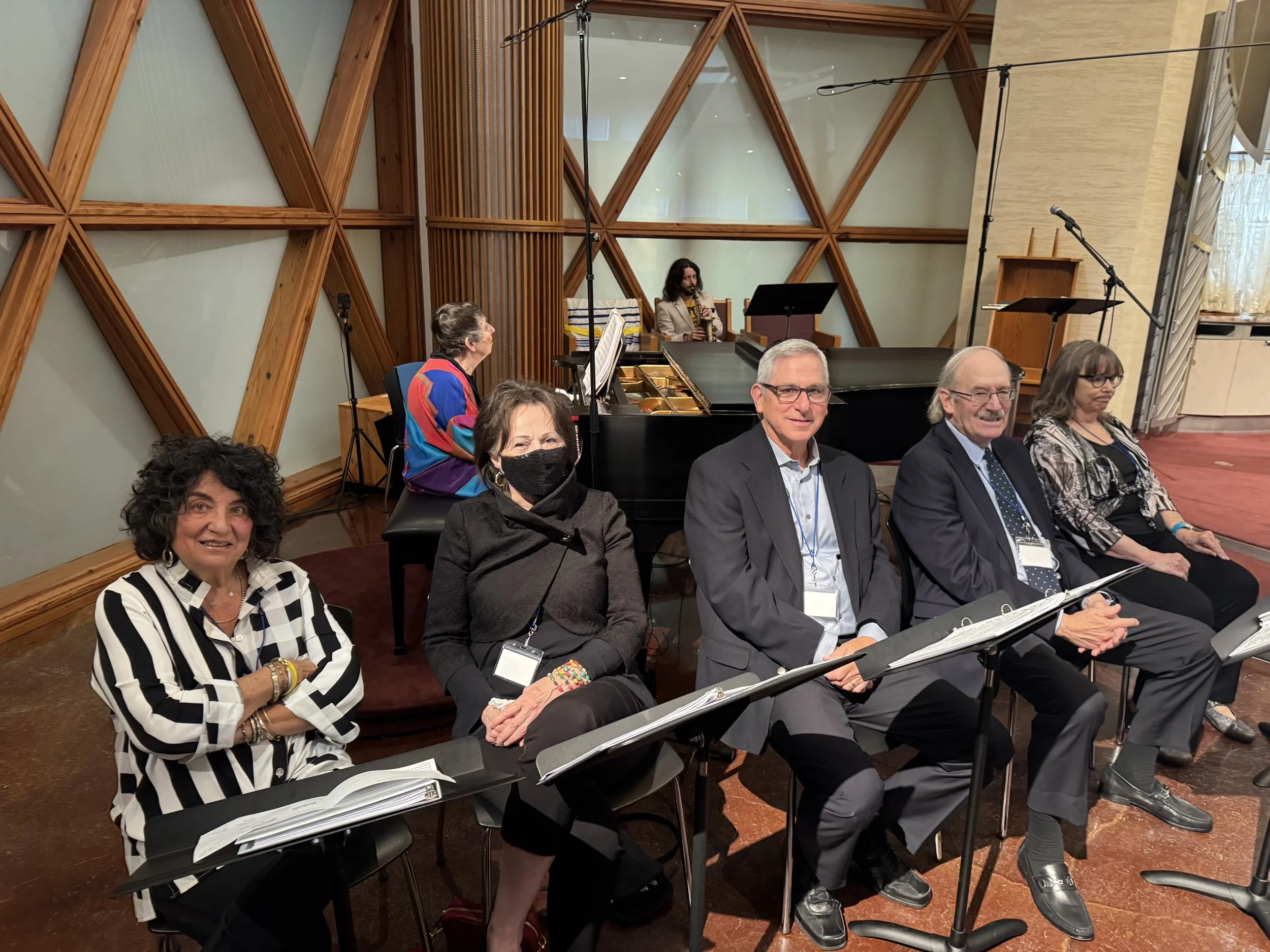Ruach Ensemble: Recollections
Eric and Henry
by Eric Bressler and Henry Berman
This conversation has been edited to make it more concise and clear. Many people have been involved with Ruach over the years, so we have not attempted to include other participants' recollections and viewpoints. - Eric and Henry
ERIC: Hi, this is Eric Bressler. I’m here with Henry Berman, and we’re going to talk about how the Bet Shalom Ruach Ensemble began, sharing our perspectives on its origins.
HENRY: I’m Henry Berman, Eric’s friend and collaborator. Together, we pieced together the Ruach Ensemble, which has now been leading services for over 20 years, becoming a mainstay at Bet Shalom. Today, we’ll revisit those early days and how the ensemble developed.
ERIC: Let's start with a simple question: What is the Ruach Ensemble?
HENRY: To me, it was an attempt to create a musical, immersive prayer experience, about 80-90% music, reducing the spoken word, while keeping the experience upbeat and engaging. The idea was derivative of the “Jazz Shabbat” in the 1990s where traditional tunes were arranged in a jazz style for a service in song. We wanted to personalize it and bring a contemporary view of spirituality to Shabbat, with new types of instrumentation and lots of vocal music.
ERIC: That’s worth emphasizing. When we were considering doing a contemporary service, it struck me that I was still singing the old traditional music that I'd sung since childhood. Yet I knew that there was a new group of musicians, singer-songwriters, who had made their mark in the Jewish camp scene initially like Debbie Friedman had in the 70s and 80s. Artists like Craig Taubman, Rick Recht, and Dan Nichols.
HENRY: I’d never even heard the term “tefillah band” before. What excited me was how music—especially contemporary interpretations of prayer—could bring a sense of spirit and engagement that a service centered only on spoken word just didn't provide. Even with serious prayers, music makes a difference.
ERIC: As a child I loved the music at Jewish summer camps—casual, outdoors, led by guitar-playing song leaders. When my wife Sally was Bet Shalom’s President, I went to some URJ Biennial conventions with her. They had workshops by those singer-songwriters playing the music they’d been doing lately. Once I attended a workshop on forming tefillah (prayer) bands. The message was: use the people and instruments you have, and create something suited to your community. I came back from it thinking, “We can do that here!”
I talked to you about the idea since we were friends and you were in the choir and were a fine pianist. And I had played clarinet at Bet Shalom for years, including klezmer music with you. So we brainstormed how to start the band. I was playing jazz regularly with Steven Snyder and Paul Georgeson, so we already had some core players. We recruited Rita and more musicians and formed a group we called “The Music Chavurah.” We played tunes from those singer-songwriters to get started.
HENRY: A few months later we invited Cantor Sarah Lipsett-Allison to join us. We encouraged support from clergy—particularly Rabbi Cohen—and worked to ensure that the group would be welcomed.
ERIC: After about six months, Sarah suggested, “We should do a service with this music!” I sort of turned and did a fist pump to myself, because that's what I had hoped for all along! It would be her idea.
HENRY: I still remember Rabbi Cohen attending that first service, sitting in the back. It was the night before Steven Snyder and Sherry Stern’s daughter Elana’s Bat Mitzvah, I think October 2004. Afterward he said, “That was great—let’s do it again sometime.”
We realized Ruach was not for everyone. Some congregants simply aren’t interested, and that’s fine. We didn’t want this to replace every service—just to offer something different. Eventually we settled on once a month, coinciding with anniversary blessings and drawing a niche but appreciative group. Rabbi Cohen and I considered several names and decided on Shabbat Ruach, meaning Spirit.
The group got more legitimacy when Rabbi Locketz joined about a year later. He brought energy, perspective, and his guitar.
ERIC: You could say that he was instrumental… ;-)
HENRY: I asked Rabbi Cohen to have Rabbi Locketz call me as soon as possible to join us. I thought to myself, “This will be a good test for us to see how important this is to this new young rabbi.” He started on July 1, and he called me at 1:30 in the afternoon of July 1! I was impressed with his strong interest right from the start. He stressed that we were service leaders, not performers; music was to enhance prayer, not to be a performance.
ERIC: Over time, new cantors added their own touches—from Cantor Sarah to Cantor Schwartz, who brought in new music, arrangements, spirituality and even influences from artists like Matisyahu. We’ve done about 100 tunes over the last 20 years.
Dan Nichols Session
HENRY: Yes, each cantor enriched Ruach in their own way. Cantor Havilio, for example, incorporated stronger connections to Israel, which reflects what the community needs today.
ERIC: Scholars-in-residence like Dan Nichols have taught us new music, broadening both our repertoire and approach.
HENRY: Ruach is still unique. For many years, instrumental services were exclusive to Reform congregations. Only recently have a few Conservative congregations begun allowing instruments at services.
ERIC: Many congregations still lack these services. You need a critical mass of musicians and leadership—sometimes clergy—with the enthusiasm to bring it to life.
Ruach Ensemble
HENRY: Some places pay professionals, but I think there’s something special about involving congregants. It creates stronger connections—people feel engaged because it’s their friends leading prayer.
HENRY: I thought it’d be interesting to tally up the different instruments we've had in the Ruach Ensemble over the years.
ERIC: Steven Snyder played electric keyboard, Rita Lusky on piano, Paul Georgeson was on bass, and I still play clarinet and flute. We had Michael Serber join with trumpet for a bit, and now Jim Flegel is on electric bass. Sam Slotksy now plays the soprano sax regularly. I think Bart Press played bass with us occasionally when Paul wasn’t there. Morris Engel played snare drum for years. Joe Bodell played guitar and mandolin. I might be forgetting some others! Lance Elston and Jake Friedman now play hand drums. Shana Eisenberg joins us sometimes with guitar. And we’ve had many vocalists over the years.
Our ensemble’s instrumental mix is different from other congregations, where guitars usually dominate. Some synagogues have up to 20 musicians and vocalists. Our guitarists have only been the clergy, Joe, and Shana.
HENRY: We even had violin, thanks to Rachel Calvert. I remember initially just wanting to play piano, but with Steven and Rita covering that, I realized I was needed more as a vocalist.
ERIC: Here’s another big question: What does Ruach mean to us?
HENRY: Honestly, sometimes I take it for granted; it’s become integral to our congregation. Its flexible structure accommodates busy schedules. Even if the ensemble’s composition changes each month, it works—it's part of what makes Ruach meaningful to us all.
ERIC: Ruach has been a huge part of my synagogue life for two decades. I’ve scheduled travel around it to be present for Shabbat or the High Holidays each month. It’s partly because of the musical outlet, and partly because of the long term friendships that I've made and cultivated in the Ruach Ensemble.
HENRY: Rehearsals are a highlight—you might not see someone for months, but coming together feels uplifting and joyful. I'm involved in Ruach and the choir, and each is a unique experience.
ERIC: Sure, we aren’t “performers,” but leading services is public and brings its own sense of fulfillment. Rabbi Locketz’s message about us being leaders, not performers, really stuck.
Playing at these services, particularly when I have solo or exposed parts, is one of the ways that I pray, by expressing myself with my music.
HENRY: The music is a spiritual outlet—and when we’re really in sync, clapping and singing together, it brings so much joy and a strong sense of community. That’s why song selection matters: keeping melodies simple makes it easier for everyone to join in.
We've pared down orchestrations over time to encourage congregational participation. Simple niguns (melodic refrains) really help everyone engage, even if they don’t remember all the words. Debbie Friedman was a pioneer in this approach, and her influence is everywhere in American Jewish music.
ERIC: Niguns become almost meditative—repeated phrases help center people as they settle into the service. And opening with music sets the tone.
HENRY: We are both proud of having started something enduring and beloved in the community. While the clergy have enthusiastically embraced Ruach, it was grassroots at the start.




